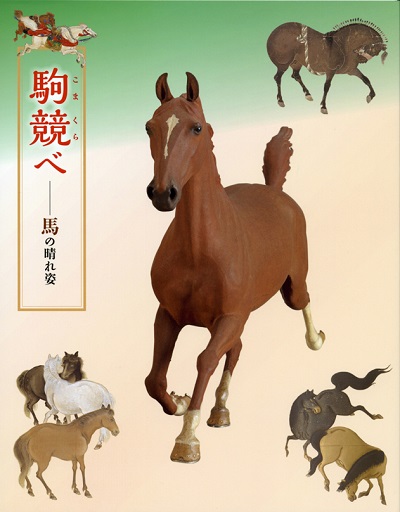| image | information |
|---|---|
 |
Since ancient times, the horse has been close to man, indispensable to our lives, and has been one of the most often depicted animals in Japanese art. The horse has been useful, utilized in farm work, carrying freight and transmitting information, and their agile mobility was employed in war battles. Therefore, the horse was often depicted with a human riding on its back, but occasionally alone to admire its noble and gallant appearance. Among the samurai, possession of superior horses lead to heighten their social position, and these horses were carefully bred in stables within the interiors of their premises. This is the subject in the screen painting titled Horse Stable, in which horses are depicted tethered in a stable. The Imperial Court is also associated with horses. Among the cultures handed down within the Court, traditional horsemanship in Japan dating back to the Nara and Heian periods, namely, Dakyu (ancient Japanese polo) and Horohiki (pennants streaming), is still continued to the present day. Many people probably remember the parades of horse-drawn carriages on the occasions of the Imperial Wedding of Their Imperial Majesties the Emperor and Empress in 1959, and the Enthronement in 1990. The state carriage is also horse drawn, used when desired by newly appointed foreign ambassadors for the Ceremony of the Presentation of Credentials held in the Imperial Palace, to show international goodwill. In this exhibition, we will display art works mainly created in Japan from Kamakura to modern eras, along with foreign works, focusing on how horses were expressed in art, as an opportunity to perceive equine history and culture. |